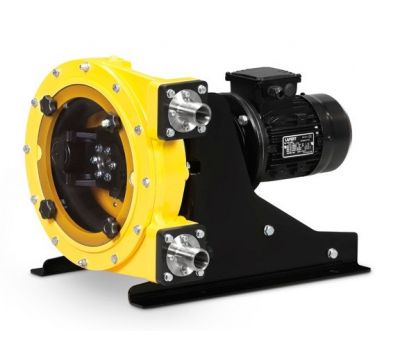The personality of Spanish wines, a reflection of the land, the vine and the grapes, has made this product one of the great emblems of the “Marca España”. Beyond the excellent raw material, the enormous international prestige of these wines would not have been possible without the enormous effort made by winemakers and winegrowers to combine tradition with new production techniques.
The wine pump represents a fantastic exponent of the potential of these new technologies applied to the world of oenology. Do you want to discover how they work? What types of wine pumps are there and for what uses are they recommended? Read on and find out!
What makes wine pumps different?
Winemaking is an extremely complex process, with stringent quality requirements. From its harvest to the arrival at its transformation into the final product, the grapes must be treated as a real treasure, to preserve all their organoleptic properties and obtain a product of the highest quality. A wine pump like the ones you can find in Boyser, is designed and manufactured to guarantee a delicate transfer of the product, from its arrival at the winery to its final bottling.
Peristaltic pumps and rotary lobe pumps are two of the most widespread industrial pumps in this sector. Let’s see below its characteristics and applications:
- Peristaltic pumps for oenology
The characteristic versatility of peristaltic pumps makes them suitable for many applications within the winery, among which the transfer of wine, the feeding of refrigerators, pumping over, destemmed and crushed grapes stand out. These wine pumps can be used throughout the year. In the current catalogue you can find peristaltic pumps designed specifically for the wine sector, with a mobile trolley for total operating comfort. Its advantages also highlight its ease of maintenance, as well as being self-priming and reversible.
- Lobe pumps for oenology
Lobe pumps are ideal for working with fluids with suspended particles, such as skins and nuggets, guaranteeing at all times a delicate treatment and transfer, so as not to damage the product or alter its properties. These wine pumps are characterized by their low rotation speed, offering a practically continuous flow. Like peristaltic pumps, lobe pumps are also reversible and self-priming.
Lobe pumps can be applied to the transfer of wine in large flows, loading and unloading of trucks, pumping of wort or destemmed and crushed grapes, feeding of refrigerators or filtration. The feeding hopper of these wine pumps makes them capable of pumping both whole grapes and pasta or fermented grapes.
Industrial solutions for cellars
Are you thinking of modernizing your cellar with new equipment? In addition to wine pumps, there are also other latest technology solutions that will be of great help to optimize the production process. The equipment for automatic filling or emptying of barrels, for example, applies the technology of peristaltic pumps to this process to ensure a delicate transfer, without foams, shears, centrifuges or sudden changes in temperature. There is also specific equipment for in-line dosing of dilute sulphur dioxide, with absolute precision.

